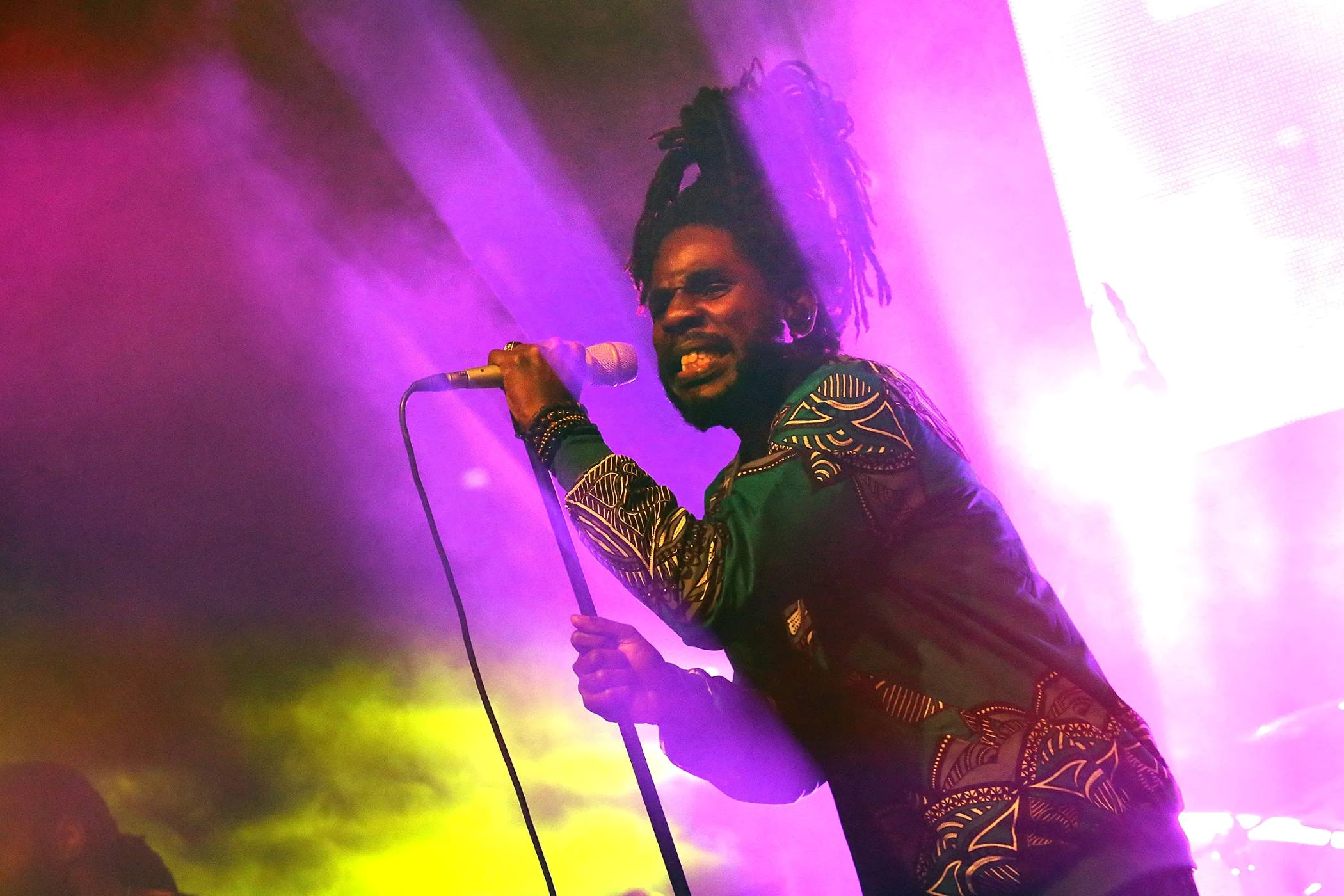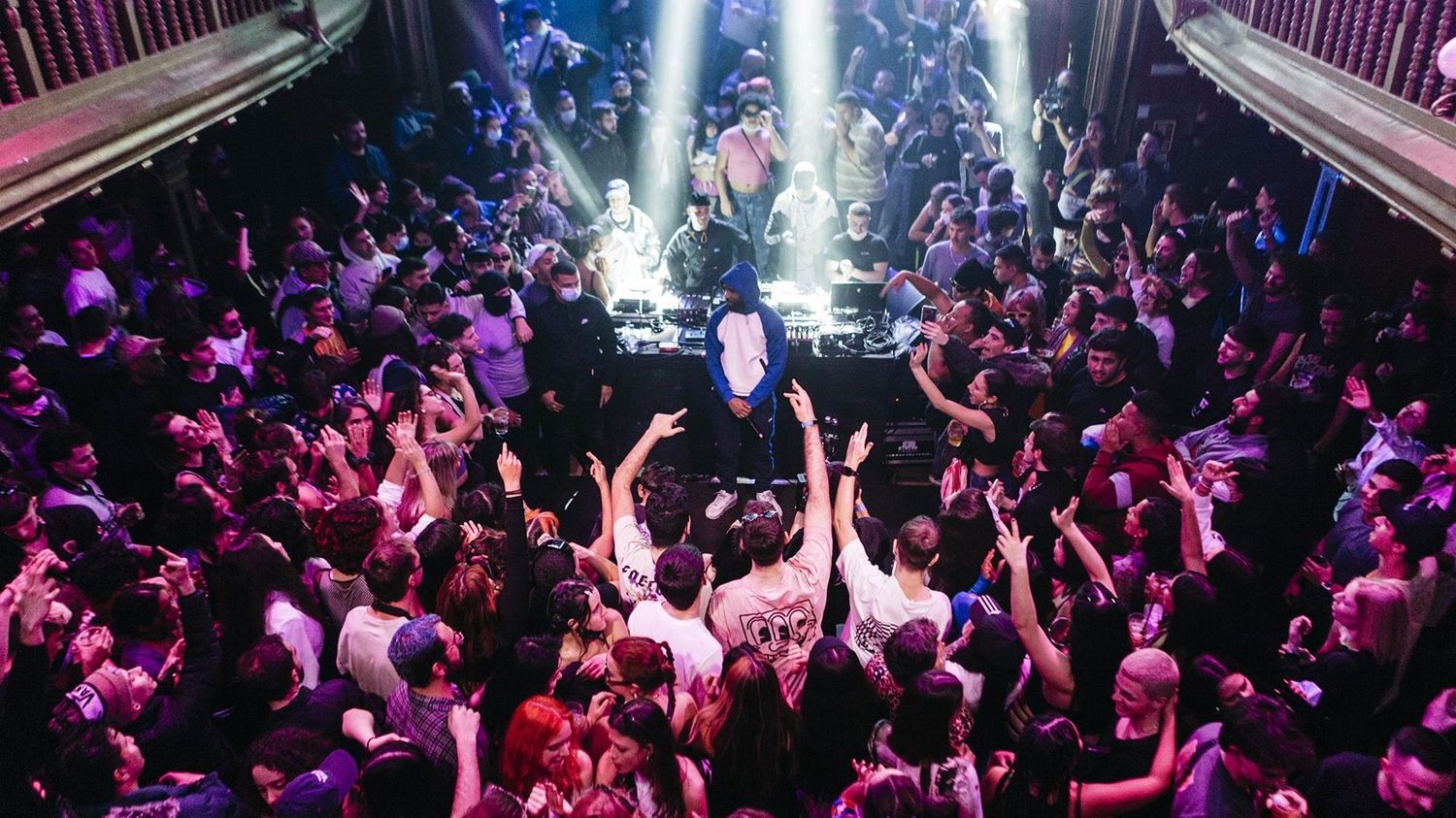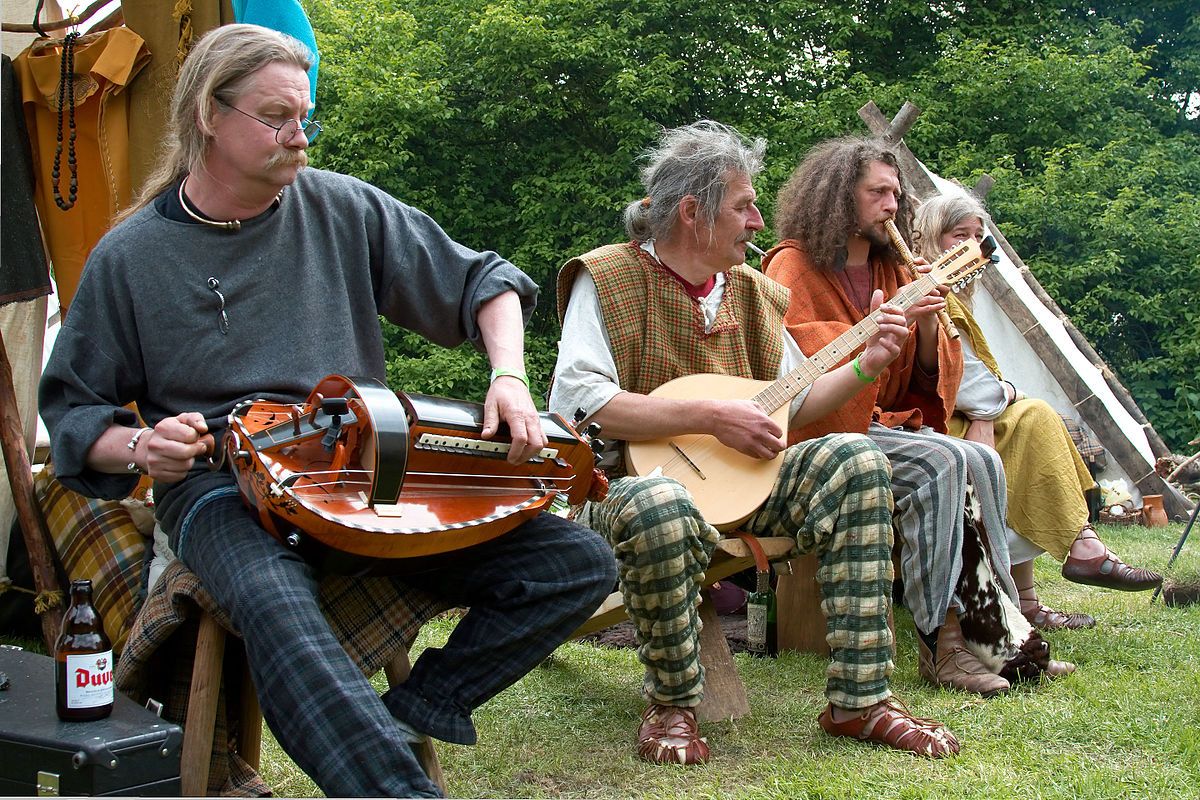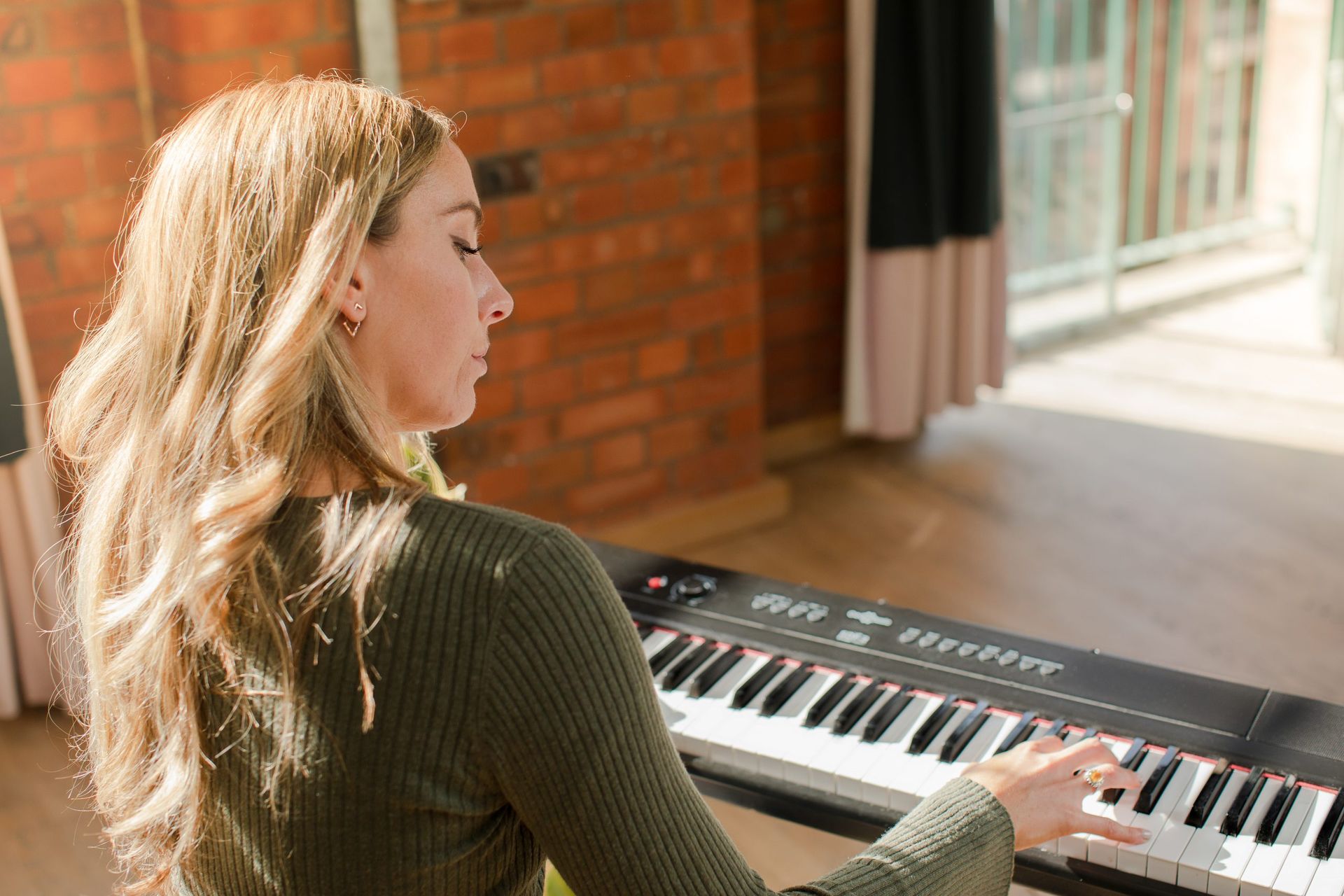

Reggae
What Is The Tempo Of Reggae Music
Modified: January 22, 2024
Discover the unique tempo of Reggae music and its rhythmic groove. Dive into the laid-back and infectious beats that define the sound of this genre.
(Many of the links in this article redirect to a specific reviewed product. Your purchase of these products through affiliate links helps to generate commission for AudioLover.com, at no extra cost. Learn more)
Table of Contents
Introduction
Reggae music is a genre steeped in rich history and cultural significance. Originating in Jamaica in the 1960s, reggae has since spread its infectious rhythm and positive vibes throughout the world. It has become synonymous with relaxation, social consciousness, and the pursuit of peace and unity.
One of the key elements that contributes to the unique sound and feel of reggae music is its tempo. Tempo refers to the speed or pace at which a piece of music is played. It sets the foundation for the rhythm and groove of a song, and in the case of reggae, it plays a crucial role in creating that iconic laid-back and syncopated feel.
Understanding the tempo of reggae music goes beyond simply knowing its BPM (beats per minute). It involves diving deep into the origins of the genre, exploring the characteristics that define its tempo, and appreciating the impact it has on both the music and the culture surrounding it.
In this article, we will delve into the roots of reggae music and explore the significance of tempo within the genre. We will also examine the specific characteristics of reggae tempo, the role of drums in shaping the rhythm, the influence of tempo on reggae dance moves, and how the tempo has evolved in modern variations of reggae.
So sit back, relax, and let’s embark on a rhythmic journey through the world of reggae music and its fascinating tempo.
The Roots of Reggae Music
Reggae music has deep roots in Jamaica, with its origins tracing back to the late 1960s. It emerged as a fusion of several musical styles, including ska and rocksteady. The lyrical content of reggae often reflects the socio-political issues, struggles, and aspirations of the Jamaican people.
Reggae’s tempo is heavily influenced by its predecessors, ska and rocksteady. Ska is characterized by its upbeat and lively tempo, while rocksteady has a slower and more relaxed feel. Reggae took elements from both genres, incorporating a steady rhythm and a slower tempo that allowed for more emphasis on the lyrics and the message behind the music.
The music of reggae legends such as Bob Marley, Peter Tosh, and Jimmy Cliff brought international recognition to the genre and spread its popularity worldwide. The powerful and emotive lyrics combined with the infectious rhythm and soulful melodies captured the hearts of listeners, igniting a global love affair with reggae music.
Reggae’s roots can be traced back to the heart of Jamaica’s vibrant music scene in the capital city of Kingston. It was in the studios of legendary producers like Coxsone Dodd, Lee “Scratch” Perry, and Bunny Lee that the iconic sounds of reggae were crafted.
These pioneers used their innovative production techniques to create the distinct rhythm of reggae. They experimented with the tempo, layering intricate percussion patterns with a strong emphasis on the offbeat, giving reggae its signature syncopated feel.
Furthermore, the influence of Jamaican music traditions, such as mento and Rastafarian drumming styles, shaped the foundation of reggae’s tempo. Mento, a Jamaican folk music genre, incorporated a slower tempo and polyrhythmic percussion patterns, while Rastafarian drumming added spiritual significance and a sense of grounding to the music.
Overall, the roots of reggae music encompass a rich cultural history and a fusion of diverse musical influences. This blending of styles and the emphasis on the offbeat played a pivotal role in shaping the unique tempo that is synonymous with reggae. Understanding these foundations is essential to appreciating and exploring the depths of reggae’s rhythm and groove.
Understanding Tempo in Music
Tempo is a fundamental aspect of music that governs the speed and rhythm of a piece. It has a significant impact on the overall feel and mood of the music, dictating how fast or slow the notes are played or sung. Understanding tempo is essential for musicians, as it helps them establish the desired energy and emotion in a song.
Tempo is typically measured in beats per minute (BPM), which refers to the number of beats or pulses occurring in one minute. A higher BPM denotes a faster tempo, while a lower BPM indicates a slower tempo. For example, a fast-paced dance track may have a tempo of around 120-140 BPM, while a slow ballad might range from 60-80 BPM.
Tempo not only affects the speed of the music but also influences the listener’s perception of the rhythm. It determines the spacing between notes and the relative durations of musical phrases. A faster tempo creates a sense of energy and urgency, while a slower tempo evokes a more relaxed and contemplative mood.
In addition to tempo, musicians often employ terms like “allegro” (fast), “andante” (moderate), or “largo” (slow) to further describe the desired speed and character of the music. These indications provide a general reference point for performers and listeners, giving them a better understanding of the intended mood.
Tempo plays a crucial role in various musical genres, and reggae is no exception. Reggae’s tempo is characterized by its laid-back and unhurried pace. It falls within the moderate to slow range, typically ranging from around 70 to 90 BPM. This slower tempo creates a sense of space and allows the listener to fully immerse themselves in the lyrics and the intricate rhythms of the music.
Understanding tempo is not only important for musicians but also for dancers. Each genre of music often has its own style of dance that corresponds to its tempo. In the case of reggae, the tempo influences the swaying, groove-based movements often associated with the genre. The slower tempo allows for a more relaxed and sensual expression on the dancefloor.
Overall, tempo is a vital element in music that sets the pace, feel, and mood of a composition. In the realm of reggae, understanding the genre’s distinct tempo helps us appreciate its laid-back and soulful nature, allowing us to fully embrace the unique rhythm and vibe that reggae music offers.
The Characteristics of Reggae Tempo
The tempo of reggae music is one of its defining characteristics, contributing to its distinct sound and feel. While reggae’s tempo is generally slower compared to other genres, it possesses unique qualities that make it instantly recognizable.
One of the key characteristics of reggae tempo is its steady and laid-back groove. The rhythm is often rooted in a 4/4 time signature, with a strong emphasis on the offbeat. This offbeat syncopation, commonly referred to as the “one drop,” is a fundamental element that drives the reggae rhythm. It gives the music a relaxed and infectious feel, allowing listeners to effortlessly sway and groove to the beat.
In addition to the offbeat, reggae tempo is characterized by a moderate to slow pace. It typically ranges from around 70 to 90 BPM, creating a sense of space and allowing the music to breathe. This slower tempo gives room for the nuances and intricacies of the instrumentation and vocals to shine through, enhancing the overall depth and impact of the music.
Another distinctive feature of reggae’s tempo is its use of repetition and simplicity. The rhythm often revolves around a few basic chord progressions and motifs, repeated throughout the song. This repetition builds a hypnotic and captivating quality, drawing listeners into the rhythmic groove and allowing them to fully immerse themselves in the music.
Reggae’s tempo also allows for a significant focus on the lyrics and message of the songs. The slower pace provides space for the singers to deliver their poetic and socially-conscious lyrics with clarity and intention. It allows the words to resonate, encouraging listeners to reflect on the messages and themes being conveyed.
Furthermore, reggae’s tempo is known for its “laid-back and heavy” feel. The emphasis on the offbeat gives the music a relaxed and soothing quality, while the deep basslines and pulsating drum patterns add weight and depth to the overall sound. This combination creates a hypnotic groove that is both calming and energizing at the same time.
Overall, the characteristics of reggae’s tempo – the offbeat rhythm, the moderate pace, the simplicity and repetition, and the laid-back and heavy feel – all contribute to the unique identity of the genre. It’s these qualities that have made reggae a beloved and influential genre, attracting listeners from all walks of life and spreading positive vibrations across the globe.
The Role of Drums in Reggae Tempo
When it comes to reggae music, the drums play a crucial role in shaping and maintaining the tempo. They provide the foundation for the steady groove that is synonymous with the genre, creating a rhythmic framework upon which the other instruments and vocals build.
In reggae, the drum patterns are often stripped down and minimalist, focusing on simplicity and precision. The drummer’s primary objective is to maintain a steady and relaxed pulse that supports the overall tempo of the song.
The main drum pattern in reggae is known as the “one drop.” This pattern emphasizes the offbeat by accentuating the third beat of each bar, as opposed to the traditional emphasis on the downbeat. The result is a syncopated rhythm that gives reggae its distinctive feel and groove.
One of the key elements in the one drop pattern is the kick drum, which provides a deep and resonant thump on the first and third beats. This kick drum emphasis on the offbeat adds to the laid-back nature of reggae music and ensures a solid foundation for the rhythm section.
The snare drum also plays a significant role in reggae’s tempo. Unlike in other genres where the snare is placed predominantly on the backbeat, in reggae, it often lands on the third beat, coinciding with the kick drum. This adds to the syncopation and groove of the rhythm, accentuating the offbeat and creating a sense of tension and release.
Alongside the kick and snare, the hi-hat or ride cymbal provides the constant and steady eighth-note pulse that reinforces the tempo. It provides a shimmering and continuous sound, filling in the gaps between the kick and snare hits, and adding texture and depth to the rhythm.
While the drum patterns may seem simple, it is the precision and timing of the drummer that truly brings the reggae tempo to life. Each hit and accent must be executed with precision and feeling, maintaining the laid-back groove while keeping the rhythm driving forward.
The utilization of space and dynamics is also important in reggae drumming. Drummers often incorporate pauses or breaks in their patterns, allowing the music to breathe and giving emphasis to certain musical phrases. This use of space adds to the overall feel and flow of the tempo, enhancing the impact and energy of the music.
In summary, the drums in reggae music are the heartbeat of the genre, providing the steady pulse and groove that define its tempo. Through the one drop pattern, the kick and snare emphasis on the offbeat, and the dynamic use of space, the drums play a crucial role in creating the distinct rhythm and feel of reggae music.
The Influence of Tempo on Reggae Dance Moves
The tempo of reggae music has a significant influence on the way people move and dance to the rhythm. Reggae’s laid-back and syncopated tempo sets the stage for a unique style of dance that is intimately connected to the music.
Reggae dance moves are characterized by fluidity, groove, and a deep connection to the music’s rhythm. The slower tempo allows for dancers to express themselves in a more relaxed and sensual manner, allowing their bodies to move in sync with the music.
One of the iconic dance moves commonly associated with reggae is the “skank.” The skank involves a swaying motion, where the hips, torso, and arms move in harmony with the rhythm. This dance move complements the laid-back tempo of reggae, allowing dancers to effortlessly flow with the music and connect with its groove.
The emphasis on the offbeat in reggae’s tempo also influences the dance moves. Dancers often accentuate the third beat, syncing their movements with the snare hits to create a rhythmic and visually captivating performance. This synchronization with the offbeat adds to the overall vibe and feel of the dance, complementing the syncopated rhythm of the music.
In addition to the swaying motion and synchronization with the offbeat, reggae dance also incorporates elements of footwork, body isolations, and dynamic hip movements. Dancers may incorporate steps such as toe taps, shuffles, and slides, infusing their movements with a sense of groove and rhythm.
The slower tempo of reggae allows dancers to engage in improvisation and freestyle. It encourages dancers to explore their own unique interpretation of the music, creating a personal expression that is in sync with the rhythm. This freedom of movement adds an element of creativity and individuality to reggae dance.
Reggae’s tempo also sets the mood for partner-based dances, such as the “rub-a-dub” style. This style involves close contact between partners, with intricate footwork and body movements performed in tandem. The slower tempo allows for more deliberate and sensual movements, creating a connection and chemistry between dancers.
Overall, the tempo of reggae music plays a crucial role in shaping the dance moves associated with the genre. From the swaying motion of the skank to the synchronization with the offbeat and the freedom of improvisation, reggae dance is an embodiment of the music’s laid-back and rhythmic nature. It is a celebration of movement and expression, allowing individuals to connect and immerse themselves in the infectious rhythm of reggae.
Modern Variations of Reggae Tempo
While reggae music is known for its steady and laid-back tempo, the genre has continually evolved, giving rise to various modern variations that explore different tempos and styles. These variations retain the inherent reggae charm while infusing new elements and influences from other genres.
One such modern variation is reggae fusion, which blends reggae with elements of other genres like hip-hop, R&B, and electronic music. Reggae fusion often incorporates faster tempos, ranging from 90 to 120 BPM, while still maintaining the core reggae rhythms and instrumentation. This faster tempo injects a newfound energy into the music, creating a more upbeat and dancehall-inspired vibe.
Dancehall, a subgenre of reggae, is characterized by a faster tempo and a more aggressive style. With tempos ranging from 100 to 130 BPM, dancehall brings a high-energy and infectious rhythm to the forefront. The faster tempo lends itself to lively and energetic dance moves, featuring quick footwork, acrobatics, and dynamic body movements.
Another modern variation is reggae rock, which fuses reggae with rock and punk influences. Reggae rock often features a slightly faster tempo compared to traditional reggae, incorporating elements of rock guitar riffs and powerful drumming. The tempo tends to be in the range of 90-110 BPM, giving the music an uplifting and energetic feel that’s perfect for live performances and audience engagement.
Reggae-pop, on the other hand, takes a mainstream approach by infusing reggae elements into contemporary pop music. This variation often features catchy hooks, upbeat melodies, and a faster tempo ranging from 100 to 120 BPM. Reggae-pop’s tempo creates a more accessible and radio-friendly sound, while still retaining the reggae influences and rhythmic elements.
Reggaeton, a genre that originated in Puerto Rico, combines reggae with Latin influences such as salsa, merengue, and hip-hop. With tempos typically ranging from 90 to 110 BPM, reggaeton brings a vibrant and infectious rhythm to the dancefloors. It combines reggae’s laid-back groove with Latin percussion and fast-paced vocal delivery, creating a lively and energetic tempo that suits various dance styles, including hip-hop and Latin dances.
Overall, modern variations of reggae tempo showcase the genre’s versatility and its ability to adapt to different musical influences. While traditional reggae remains rooted in its slower tempo, these modern variations explore faster tempos and incorporate diverse genres. Whether it’s reggae fusion, dancehall, reggae rock, reggae-pop, or reggaeton, each variation brings its own unique flavor while still paying homage to the traditional reggae rhythm and groove.
Conclusion
Reggae music, with its captivating tempo, has undoubtedly left an indelible mark on the music world. Its roots in Jamaica and its fusion of various musical elements have given birth to a rhythm and groove that is instantly recognizable and universally appealing.
The tempo of reggae music, characterized by its laid-back and syncopated feel, sets the stage for a unique and immersive experience. From the steady pulse of the drums to the offbeat accents and the deep basslines, reggae’s tempo creates a relaxed and soulful environment that allows listeners to connect with the music on a profound level.
Understanding the characteristics of reggae’s tempo, such as its simplicity, repetition, and emphasis on the offbeat, helps us appreciate the genre’s unique identity. It guides us in exploring the dance moves that are intricately connected to the music, allowing our bodies to naturally sway and groove to the rhythm.
Furthermore, reggae’s tempo has continued to evolve and adapt over time, giving rise to modern variations that explore different tempos and styles. From reggae fusion to dancehall, reggae rock to reggaeton, these variations introduce new elements while still honoring the core essence of reggae’s rhythm and groove.
In conclusion, the tempo of reggae music is at the heart of its appeal. It defines the genre’s unique identity and creates a rhythm and vibe that resonates with people from all walks of life. Whether you’re relaxing on the beach, dancing at a reggae concert, or simply enjoying the music at home, the tempo of reggae has the power to transport you to a place of peace, unity, and positive vibrations.
So, no matter the tempo or variation, reggae continues to be a genre that uplifts the spirit and brings people together through its infectious rhythm. It is a testament to the power of music to transcend boundaries and create a sense of unity and joy.











